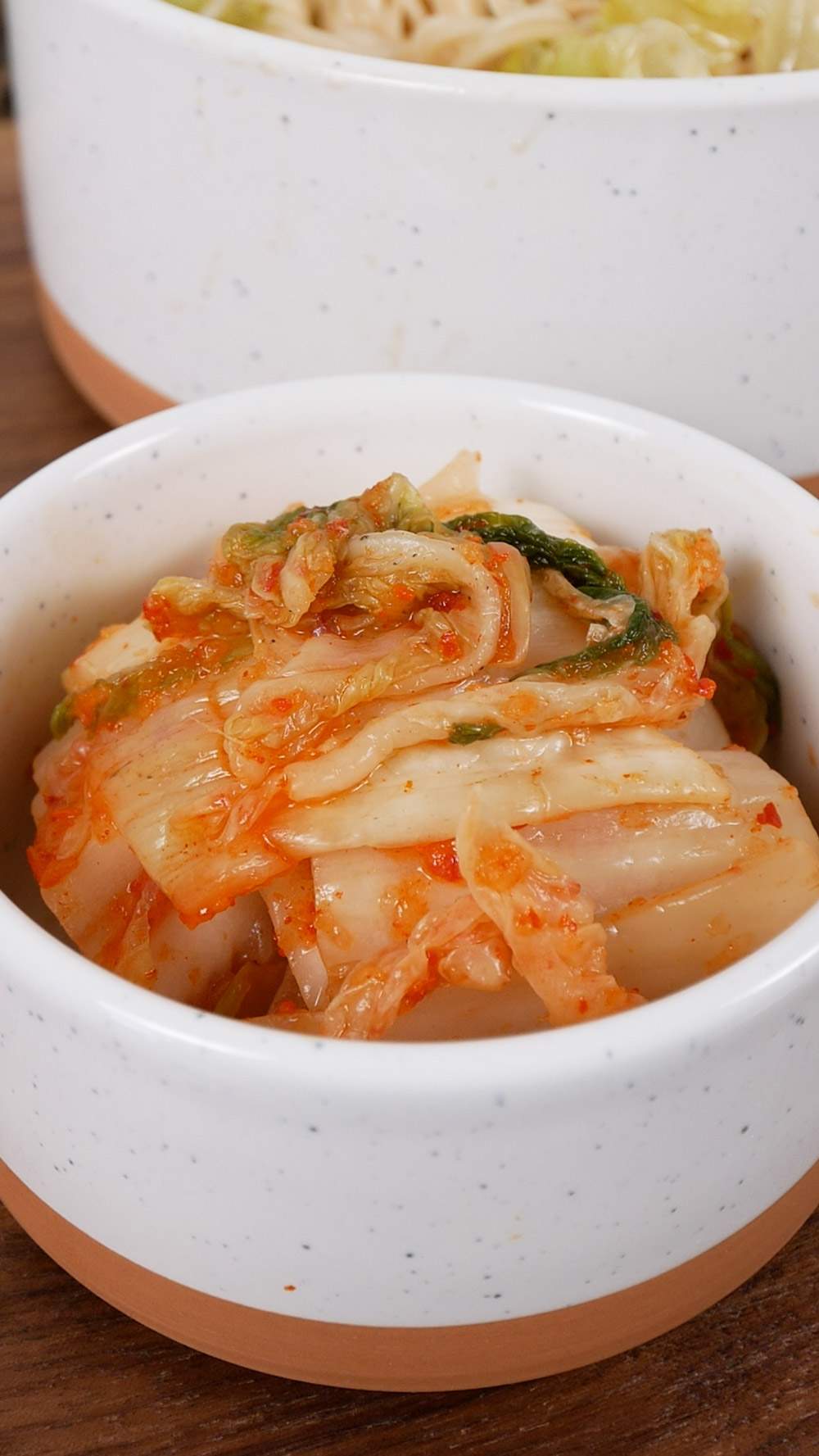
How to Make Easy Kimchi
There are so many different ways to make kimchi but my mom likes to keep it simple with just a few key ingredients. Her recipe is easy, simple, approachable yet incredibly delicious
Ingredients
- 4 napa cabbages
Brine
- 8-10 cups water
- 1/4 cup salt
Sauce
- 30-40 garlic cloves
- 5-6 inch nub of ginger sliced
- 1 1/2 onions chopped
- 1 lb korean radish chopped
- 8-10 scallions chopped
- 1 1/2 cup gochugaru Korean red pepper flakes
- 3-4 tbsp sugar
- 1/4 cup salt
- 1 1/2 cup fish sauce
- 2 cups anchovy stock or water
Instructions
- Prepare the brine by filling up a big bucket with water and 1/4 cup of salt. The brine should be salty to taste so adjust the salt accordingly.
- Cut the napa cabbages in half then into quarters and slightly wet them so the salt adheres better.
- Generously salt in between the layers of the cabbage heads and place them in the brine.
- Let the cabbage brine for 8-16 hours before rinsing with water and draining. Make sure to squeeze all the excess water out.
- For the sauce, combine sliced ginger, garlic, chopped onion, and chopped radish into a blender. Fill with water about half way and blend until smooth.
- Transfer to a large bucket with chopped scallions. Add the sugar, fish sauce, gochugaru, salt, and anchovy stock. Adjust the seasoning to your taste.
- Take a small handful of the sauce and rub it into each layer of cabbage. Make sure most of it is added to the cabbage head instead of the leaves.Transfer to a glass jar and repeat.
- Transfer to a glass jar and repeat.
- Let this ferment for 1-3 days and enjoy!
Notes
1. The kimchi will continue fermenting at room temperature. To slow down the fermentation process, place the kimchi in the fridge after 1 day.
2. For 2 cups of anchovy stock, combine 8 dried anchovies (innards removed), 1 5x5 sheet of kelp, half an onion, and 6 cups of water. Boil for 20 to 30 minutes then strain. The anchovy stock can be substituted with vegetable stock or water.
2. For 2 cups of anchovy stock, combine 8 dried anchovies (innards removed), 1 5x5 sheet of kelp, half an onion, and 6 cups of water. Boil for 20 to 30 minutes then strain. The anchovy stock can be substituted with vegetable stock or water.